Itinerary: House Museums
In this month's Itinerary, supported by Dulux Colours of New Zealand, Sebastian Clarke visits New Zealand's house museums: those places committed to the memory and presentation of bygone New Zealand spaces for living.

Houses are rarely static places. As essential architectural sites, they oscillate between cultivating the kind of personal patina that comes with habitual and active occupation and being subject to the New Zealand obsession: the capricious DIY renovation. Within this relentless tug of war, there are some houses which we decide have values that warrant their physical preservation. These are the houses that become museums.
Of course, acts of identifying and protecting historic houses are widely accepted as legitimate processes within our system for managing Aotearoa New Zealand’s built environments. However, our heritage practices are so often only façade deep, privileging the retention of external building features while the rooms within disappear almost literally behind closed doors. It is, therefore, worth taking a moment to recognise the unique proposition of house museums: those places committed to the memory and presentation of bygone New Zealand spaces for living.
The term ‘house museum’ is an inclusive one and embraces any house which has been re-imagined as a visitor destination thanks to the belief that it has a story that deserves to be told – and experienced. Generally, this story is tied to either the nature (be it ordinary or extraordinary) of a house’s inhabitants or its architecture and interiors. Whether intentional or not, this niche category of place provides us with some of the only publicly accessible opportunities to engage directly with local histories of domestic architecture, construction and design.
In this itinerary, we attempt to profile house museums across different regions and have included places managed by central government, local councils and volunteer-run trusts. In most cases, we have focused on destinations where you’ll find single stand-alone buildings, rather than on those that might be considered ‘open-air heritage parks’ to where several older buildings have been relocated. However, there is no formula for creating an ‘appropriate’ house museum – nor should there be. In some cases, you’ll encounter an undecipherable blend of fact and fiction, as it is important to recognise that the experience of each place is overlaid and mediated by some degree of post-facto curation (whether acknowledged or not).
In recent years, there have been an encouraging number of refreshed visitor experiences, temporary exhibitions and other creative ‘activations’ within New Zealand house museums that have sought to remind audiences of their unique opportunities for entertainment and education. Despite this, we are regularly reminded of how few people really engage with house museums in their own communities. One house museum manager commented that, at the property he cared for, international visitors usually represented the majority of annual visitor numbers, while locals made up only the smallest segment. Many of us visit a nearby house museum only on a childhood school visit, and never return. It’s not often that visiting a house museum is at the top of one’s to-do list but, while we are still living highly localised existences, this guide can hopefully serve as a reminder of the opportunities that our house museums offer.
Some parting words of advice for any aspiring house museum hounds out there: many house museums (especially those managed by volunteer trusts) have limited or no regular visitor hours but, from personal experience, always welcome enquiries about visiting and can often accommodate tours by appointment. And, finally, always sign the visitor book.
THE ITINERARY
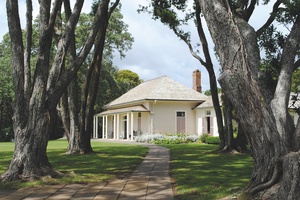
01. 1833–1834 (additions, 1933) – Treaty House
Gifted to the nation in 1932
1 Tau Henare Drive, Waitangi
The single-storey Georgian-style Treaty House sits within the grounds of the country’s most significant historic area and was the site of some of the most important moments in our history. Salmond Reed and Workshop oversaw a new and sophisticated exhibition display for the house in 2017, which aimed to “touch the rooms lightly”, exposing some of the heritage fabric within the building and introducing digital interpretation. The result is a visitor experience that sensitively tells the story of the house’s inhabitants and its place in our nation’s story.

02. 1838–1847 – The Elms, Te Papa Tauranga
Founded as a museum in 1999
15 Mission Street, Tauranga
The Elms has seen centuries of active human occupation, as a pā site, missionary society, family home and, now, heritage destination with the oldest known extant buildings in the Bay of Plenty. With no municipal museum in Tauranga, the Georgian-style mission house has long served as the city’s de-facto museum and rightly so; it has a nationally significant collection, which is on display for visitors. The Elms has previously hosted innovative exhibitions, which have activated the collection, and used contemporary artists to highlight its architecture, history and collections.
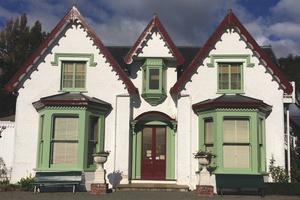
03. 1854–1857 – Broadgreen Historic House
Opened as a museum in 1968
276 Nayland Road, Stoke, Nelson
One of the Nelson region’s oldest identified residential buildings, Broadgreen is a fine two-storey cottage with a distinctive three-gabled front. It was built of cob (a wet mixture of clay and fibrous organic material that dries hard, like concrete) for Mr and Mrs Buxton and their six daughters. The house boasts an impressive heritage collection, including textiles, clothing, furniture and wallpaper. Visitors can admire the collection, generally from behind the safety of rope barriers, across both grand and working rooms, which are carefully curated like
still-life scenes.

04. 1858 – Nairn Street Cottage
Opened as a museum in 1980
68 Nairn Street, Wellington
The Nairn Street Cottage tells the story of three generations of the Wallis family, from the 1850s to the 1970s. Previously, the museum was known as ‘the Colonial Cottage’ and the visitor experience emphasised the original 1850s’ period of occupation, with each room filled with the kinds of objects associated with the first generation of inhabitants. In recent years, rooms have been refreshed so each highlights a different decade of history; this provides visitors with an engaging opportunity to observe the domestic changes that occurred within the cottage over time.
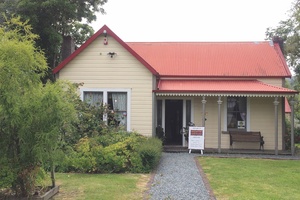
05. 1876–1877, with additions – Golder Cottage
Opened as a museum in 1987
707 Fergusson Drive, Upper Hutt
Golder Cottage appears like many other colonial house museums. A weatherboard cottage, it was expanded over decades and was home to a large family. It includes a staircase hidden behind an ordinary-looking cupboard door, leading to an upper-floor bedroom where the Golder children slept. This passage is a rare, hostile example of domestic architecture that speaks of the years immediately following the New Zealand Wars, when settlers designed houses that expressed their fear of further conflict, ensuring a unique and didactic visitor experience.

06. 1877 – Ruatuna
Gifted in 1976
441 Tinopai Road, Matakohe
Ruatuna was the birthplace and family home of former Prime Minister Gordon Coates. The house, built of kauri timber, was in the Coates family for multiple generations before being gifted to the New Zealand Historic Places Trust (now Heritage New Zealand Pouhere Taonga) for its significant and intact heritage values. It is noted for its fusion of Gothic and Georgian architecture and an unusual domestic interior influenced by medievalist approaches. Ruatuna is open by appointment for group tours delivered by Heritage New Zealand Pouhere Taonga.

07. 1880–1904 – Mitchell’s Cottage
Made a historic reserve in 1980
100 Symes Road, Fruitlands
Mitchell’s Cottage is a remarkable demonstration of master craftsmanship. Built by goldminer Andrew Mitchell and his brother John, the cottage of five humble rooms (where John and Jessie Mitchell raised their 10 children) now sits within a Department of Conservation historic reserve. Visiting Mitchell’s Cottage allows for an unmatched meditation on historic building construction practices. It is an enduring structure made of local stone within a dramatic landscape of rough schist tors; its empty rooms allow you to focus on the walls, ceilings and floors.
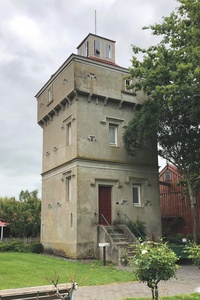
08. 1882–1903 – Firth Tower Museum
Opened as a museum in 1978
266a Tower Road, Matamata
This museum comprises a variety of historic structures, including the titular and peculiar concrete tower, built in 1882. It also features the former McCaw Homestead, a traditional historic house museum. During the 1970s, internal walls were removed within the homestead to accommodate a more straightforward visitor experience where staged rooms (filled with furniture and mannequins) are viewable from a central hallway. The homestead is notable as a representative and extant example of heritage house museums developed between 1960 and 1980.
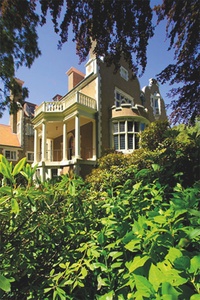
09. 1904–1907 – Olveston Historic Home
Opened as house museum in 1967
42 Royal Terrace, Dunedin
The history of Olveston makes it an almost peerless destination within New Zealand’s networks of house museums. Designed by London architect Sir Ernest George and decorated with an extensive collection of internationally sourced furniture and art, Olveston was the home of the Theomin family. In 1966, following the death of Dorothy Theomin, the last living family member, the house was generously gifted to the city of Dunedin. Rare is it to visit a house of Olveston’s pristine grandeur that tells such a coherent and authentic story of one family’s place in the world.
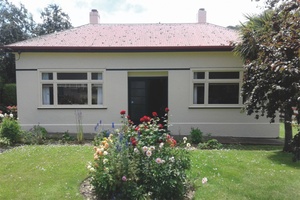
10. 1910 – Janet Frame House
Opened as a museum in 2003
56 Eden Street, Ōamaru
The childhood home of Janet Frame became a house museum during Frame’s lifetime. The approach to the museum appropriately reflected Frame’s opening lines from To the Is-Land, “with its mixture of fact and truths and memories of truths”. In this way, the house has an interesting and not always obvious blend of the authentic and the introduced. Throughout the rooms, you’ll find poems by Frame, printed on transparency paper. This intervention acts as a quiet but visible expression of her imagination, contextualised within the walls where she was raised.
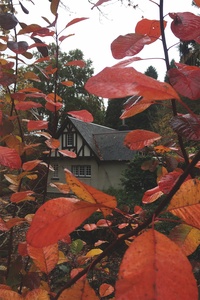
11. 1932–1944 – Tūpare
Reopened to the public in 2008
487 Mangorei Road, New Plymouth
At the heart of a superb, landscaped garden that overlooks the Waiwhakaiho River, Tūpare is a grand house designed by architect James Chapman-Taylor. Visits to the house are facilitated by a Friends of Tūpare group, which hosts insightful and in-depth tours; these provide opportunities to appreciate both the Arts and Crafts architecture of and the furniture within the house. While the tours do acknowledge Tūpare’s original inhabitants, there is minimal interpretation throughout the house, allowing the visitor experience to prioritise attention on the distinctive style of architecture.
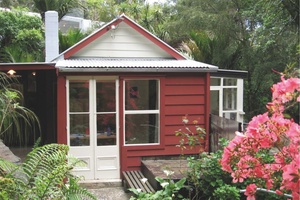
12. ca 1939 – McCahon House
Opened to the public in 2006
67 Otitori Bay Road, Titirangi, Auckland
This house was built as a weekend cottage within the native bush of Titirangi and artist Colin McCahon and his family lived here from 1953 to 1960. During that time, McCahon produced a significant number of works that were influenced by the West Auckland environment. He also made a number of artistic interventions to the house, many of which survive today. Now managed by the McCahon Trust, the house features sensitive interpretation and is often activated through creative exhibitions, talks and workshops connected to the Trust’s artist residency programme.
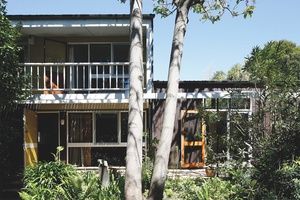
13. 1962 – Sutton House and Garden
Opened as art residency in 2021
20 Templar Street, Richmond, Christchurch
It is not often that you hear about public funds being used to acquire the house of an artist, or a modernist building – but this happened with the Sutton House. At risk of demolition following the Canterbury earthquakes, the house (designed by sculptor Tom Taylor) was restored after strong advocacy from its former owner and the Christchurch arts community. The house functions as an art residency and, when not occupied by visiting artists, will open for tours and other creative ways of activating and celebrating the house, including exhibitions, workshops and talks.

14. Fred and Myrtle’s Paua Shell House
Canterbury Museum, Opened in 2008
11 Rolleston Avenue, Christchurch
This is not strictly a house museum, but a house within a museum still counts, especially when it boasts one of the most recognised domestic interiors in the country. While the original Paua Shell House remains in Bluff, its paua collection is on long-term loan to Canterbury Museum and displayed within a re-creation of Fred and Myrtle Flutey’s house. The re-creation provides an excellent setting for appreciating the way in which a New Zealand husband and wife transformed an otherwise-ordinary bungalow into an instantly recognisable and beloved symbol of Kiwiana.
Other addresses
Heritage New Zealand Pouhere Taonga manages many historic houses
(and other building types) able to be visited across the country. These include:
Clendon House – 8 Clendon Esplanade, Rawene
Alberton – 100 Mount Albert Road, Mount Albert, Auckland
Highwic – 40 Gillies Avenue, Epsom, Auckland
Ewelme Cottage – 14 Ayr Street, Parnell, Auckland
Hurworth – 906 Carrington Road, New Plymouth
Fyffe House – 62 Avoca Street, Kaikōura
Cotons’ Cottage – 50 Cotons Road, Hororātā
Kate Sheppard House – 83 Clyde Road, Ilam, Christchurch
Totara Estate – 565 Alma-Maheno Road, Ōamaru
Other house museums include:
Frank Sargeson House – 14a Esmonde Road, Takapuna, Auckland
McNicol Homestead – 12 McNicol Road, Clevedon
Bushy Park Tarapuruhi – 791 Rangitatau East Road, Kai Iwi, Whanganui
Katherine Mansfield House & Garden – 25 Tinakori Road, Thorndon, Wellington
Isel House – 16 Hilliard Street, Stoke, Nelson
Ngaio Marsh House – 37 Valley Road, Cashmere, Christchurch
Ravenscar House Museum – 52 Rolleston Avenue, Christchurch
Fletcher House – 727 Portobello Road, Broad Bay, Dunedin
Larnach Castle – 145 Camp Road, Otago Peninsula, Dunedin
SOURCES
The New Zealand Heritage List/Rārangi Kōrero maintained by Heritage New Zealand Pouhere Taonga can be searched online (heritage.org.nz/the-list) and has the functionality to search places ‘able to visit’. This provides an excellent source of heritage visitor destinations across the country. Many house museums also have their own dedicated websites, providing good information about each building, its history and collections, as well as facilities and opening hours. These have been useful sources for this guide. In addition, Gavin McLean outlines the place of house museums in the development of New Zealand’s heritage movement in his various chapters in Alexander Trapeznik’s edited collection, Common Ground? Heritage and Public Places in New Zealand (Dunedin: Otago University Press, 2000). Elizabeth Aitken Rose focuses explicitly on the country’s literary house museums (Frank Sargeson House, Katherine Mansfield House & Garden, Ngaio Marsh House and Janet Frame House) in Sarah Shieff’s edited collection, Speaking Frankly: The Frank Sargeson Memorial Lectures, 2003–2010 (Auckland: Cape Catley, 2011). More recently, in 2018, I reflected on my enthusiasm for house museums in The Pantograph Punch (pantograph-punch.com/posts/house-museums), exploring some of my favourite examples of the typology and some of the more idiosyncratic artefacts in their collections.

The itinerary series is supported by Dulux Colours of New Zealand. Dulux Colour Specialist Davina Harper has selected a Colours of New Zealand palette based on this itinerary. See the full range and order colour samples here.









